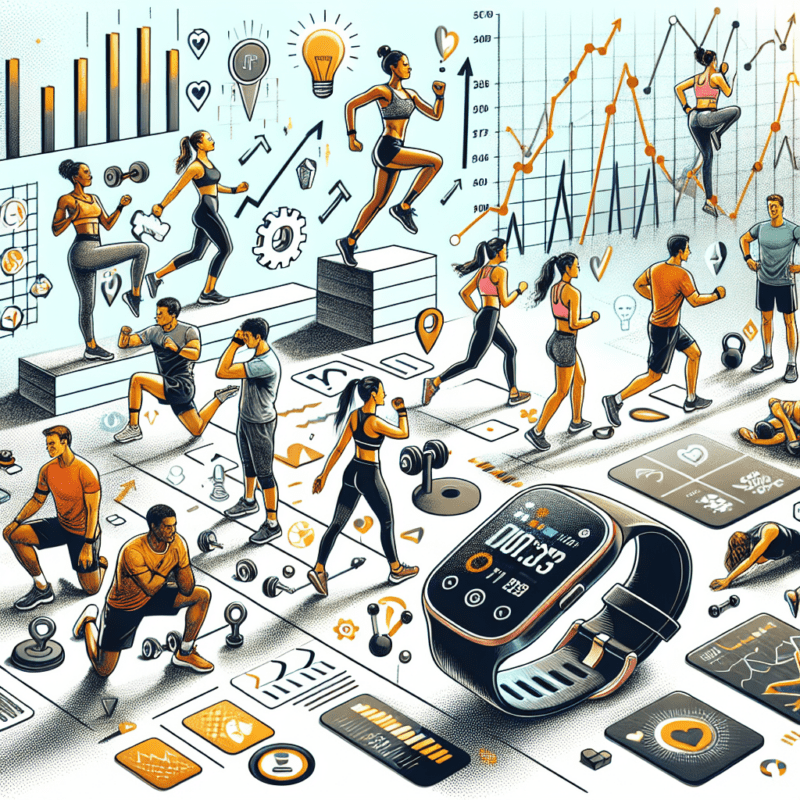How Fitness Tracking Devices Can Boost Your Motivation and Performance
In a world increasingly focused on health and wellness, fitness tracking devices have emerged as pivotal tools that not only help users monitor their physical activity but also enhance motivation and performance. By providing real-time feedback and personalized insights, these devices encourage individuals to set and achieve fitness goals. From counting steps to analyzing sleep patterns, this article will delve into how fitness tracking devices can significantly boost your motivation and performance.
Understanding Fitness Tracking Devices
Fitness tracking devices come in various forms, including smartwatches, fitness bands, and smartphone applications. These devices employ advanced technology to collect data about your physical activities and overall health metrics. They can track parameters such as steps taken, heart rate, calories burned, sleep quality, and even VO2 max levels. The data collected is then analyzed and presented through user-friendly interfaces, which can be accessed on mobile devices or computers. This information empowers users to make informed decisions regarding their fitness routines and health targets.
The integration of artificial intelligence and machine learning into many modern fitness trackers is revolutionizing the way we view fitness. These devices can learn from past data patterns, offering tailored recommendations based on your performance levels, lifestyle, and specific fitness goals. By creating personalized fitness plans that adapt to your progress, fitness tracking devices can motivate individuals to push through plateaus and achieve a higher level of performance.
How Fitness Trackers Enhance Motivation
One of the profound benefits of using fitness tracking devices is their capability to enhance motivation. By providing immediate feedback on activity levels, users can visualize their accomplishments, which fosters a sense of achievement. For instance, seeing daily step counts or calorie-burning rates can inspire users to engage in additional movements throughout the day, creating a positive feedback loop that encourages continued effort. Moreover, many fitness tracking devices come equipped with goal-setting features, allowing users to set realistic objectives that are easily manageable yet challenging enough to inspire progress.
Community engagement is another crucial motivator facilitated by fitness trackers. Many devices include social-sharing capabilities, allowing users to connect with friends and family members who are also using the technology. Some platforms feature competitive challenges, where users can compete against each other to see who can take the most steps or burn the most calories within a specified timeframe. Such elements of healthy competition not only spur individuals into action but also cultivate a supportive community focused on mutual fitness goals, further amplifying motivation to adhere to a healthy lifestyle.
The Role of Data in Improving Performance
Fitness tracking devices collect a multitude of data points that can be instrumental in enhancing overall performance. Regular analysis of this data provides insights into one’s physical condition and areas needing improvement. For example, continuous heart rate monitoring can help assess cardiovascular fitness and ensure that users are training within their optimal heart rate zones. This data is crucial for tailoring workouts to build endurance, strength, or speed according to specific fitness goals.
Similarly, sleep quality is another important metric measured by fitness trackers. Understanding sleep patterns can aid in recovery and overall health, directly influencing performance levels. A properly rested body is better equipped to engage in physical activity, making sleep analysis a vital aspect of an effective fitness regimen. With dedicated trackers that monitor sleep cycles, users can make informed adjustments to their routines, ensuring they are maximizing both performance and recovery.
Additionally, the long-term data collected by fitness tracking devices serves as a valuable tool for assessing progress over time. In contrast to sporadic gym visits that may not yield visible results, the continuous feedback provided by these devices allows users to identify trends in their performances. Adjustments can be made proactively rather than reactively, whether it’s modifying the intensity of workouts, recalibrating nutrition plans, or even scheduling rest days more effectively.
Integrating Fitness Tracking into Daily Life
To fully harness the potential of fitness tracking devices, integration into daily routines is essential. Establishing a habit of checking daily activity metrics can help solidify fitness as a core component of life. For instance, users can dedicate specific times of the day to review their achievements and set intentions. This can serve as a digital reminder of one’s goals, providing a consistent nudge to remain active throughout the day. With many devices offering reminders to move after prolonged periods of sedentary behavior, users are prompted to incorporate physical activity into various aspects of their day, whether it’s during work breaks or while commuting.
Another impactful approach is leveraging the customized workouts and training plans that many fitness trackers offer. These plans are usually designed based on current fitness levels and desired performance outcomes. By following these structured regimens, users can take the guesswork out of their workouts, ensuring they are focusing on the most effective exercises for their goals without overtraining or risking injury. This structured approach not only saves time but also enhances the overall efficiency and effectiveness of training sessions.
Furthermore, setting specific and measurable goals within these devices drives home the significance of accountability. For example, a user can set a daily step goal of 10,000 steps or aim to complete at least three workouts per week. The device then tracks the user’s progress, providing reminders and encouragement to stay on track. By making commitments visible both through the device and the social platforms associated with it, individuals are less likely to abandon their fitness plans, ensuring continued motivation and performance improvement.
Choosing the Right Fitness Tracking Device
With a plethora of fitness tracking devices available on the market, choosing the right one can be daunting. The first step is to identify your unique fitness needs and preferences. For example, those primarily interested in step tracking and basic metrics may benefit from simpler fitness bands, while serious athletes might prefer advanced smartwatches with GPS tracking, heart rate monitoring, and multi-sport features. Understanding these distinctions is crucial for selecting a device that aligns with your fitness journey.
Budget is another noteworthy consideration. Fitness trackers vary widely in price, from affordable bands to premium smartwatches. However, it is worth investing in a device that offers the features you require for optimal performance tracking. Lower-priced options might lack certain functionalities like advanced analytics or community features, which can diminish the long-term benefits.
Additionally, consider the device’s compatibility with other software and health applications. Many fitness trackers sync with ecosystem platforms, allowing for comprehensive health monitoring by consolidating data from various sources such as diet apps, workout programs, and more. This level of integration can enhance the overall effectiveness of your health regime, making it easier to keep track of progress and tweak fitness plans dynamically.
Conclusion
Fitness tracking devices are more than just stylish accessories; they are powerful tools that can transform your approach to health and fitness. By enhancing motivation through immediate feedback, supportive communities, and comprehensive data analysis, these devices provide a solid foundation for achieving personal health goals. Integrating fitness tracking into daily life fosters accountability and consistency, ensuring users maintain their commitment to their wellness journeys. When selecting the right device tailored to your needs, you unlock limitless potential for improved performance and lasting success in your fitness endeavors.
FAQs
What types of fitness tracking devices are available?
Fitness tracking devices come in several forms, including fitness bands, smartwatches, and smartphone apps, each offering varying features for tracking physical activity, heart rate, sleep, and more.
Can fitness trackers help with weight loss?
Yes, fitness trackers can aid in weight loss by providing users with daily activity metrics, calorie counts, and goals that encourage movement and healthy habits, ultimately promoting a caloric deficit.
Are fitness tracking devices accurate?
While fitness tracking devices provide useful estimates, accuracy can vary depending on the type of data measured and the device itself. It’s always beneficial to consider the feedback as a guide rather than an absolute measurement.
How can I choose the right fitness tracking device for me?
When choosing a fitness tracker, consider your fitness goals, budget, desired features, and compatibility with other health apps. Tailor your selection to what aligns best with your lifestyle.
Do I need to wear my fitness tracker all the time?
While wearing your fitness tracker all the time can provide the most comprehensive data, consistency is key. You should wear it regularly during activities and sleep for the best insights into your overall health.



